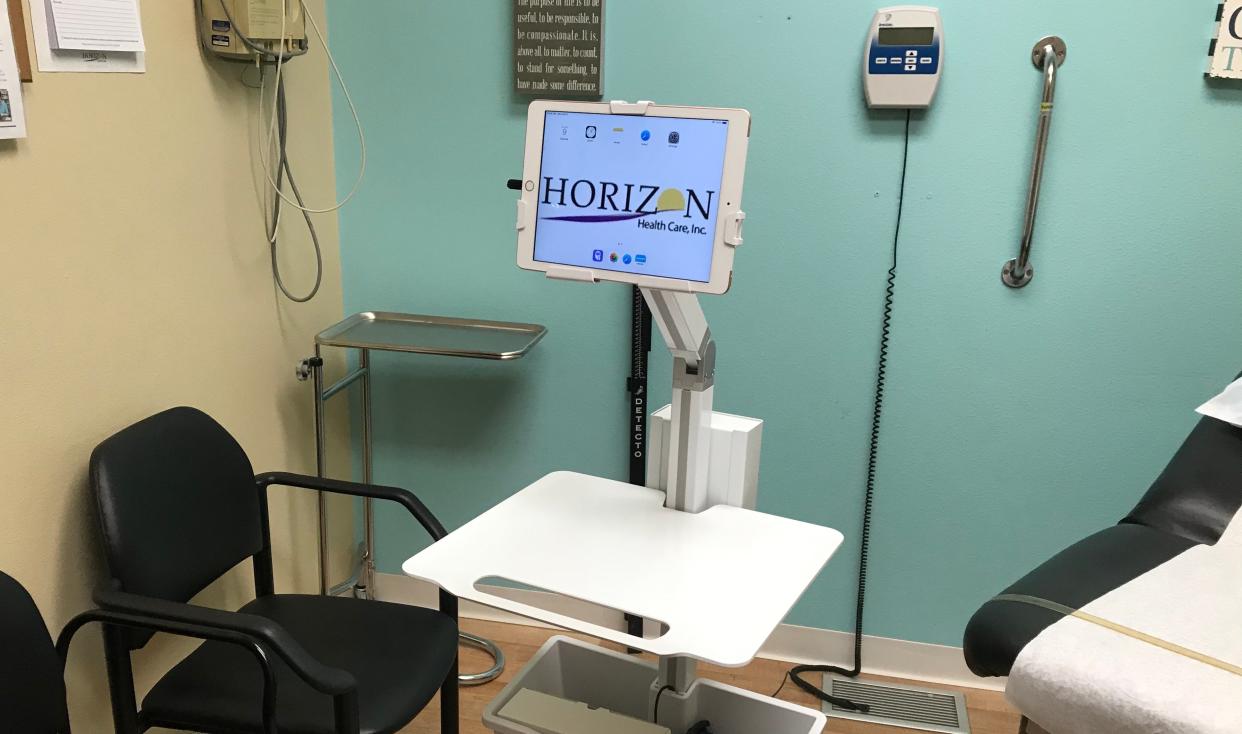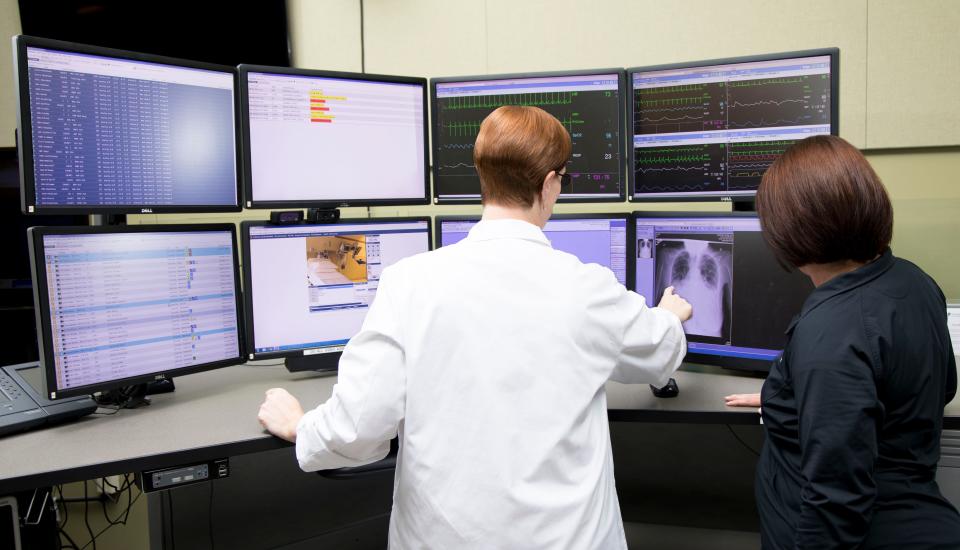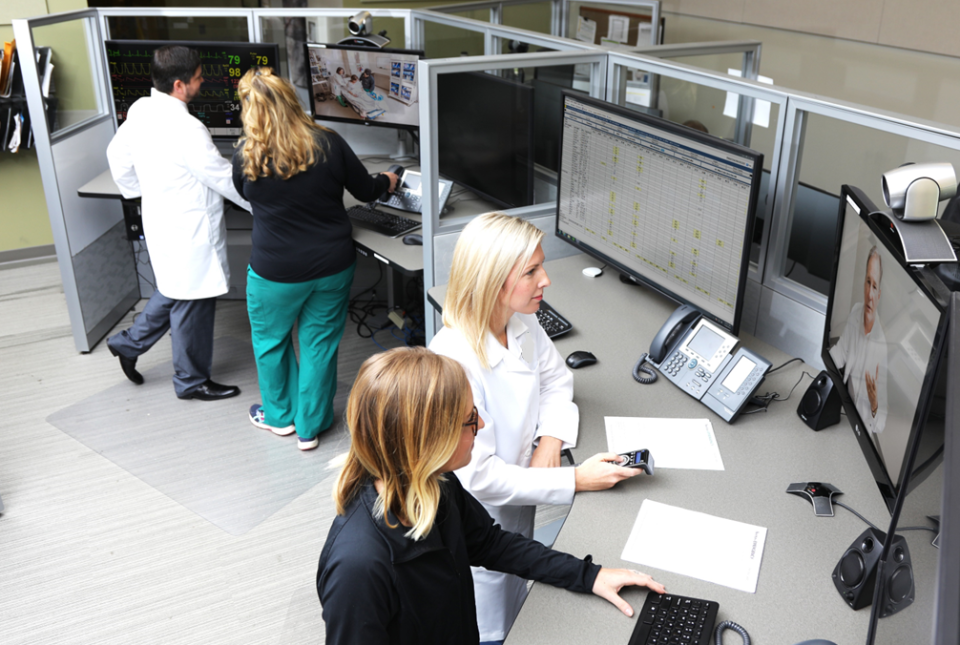Timing is right for Sanford Health’s $350 million expansion in telemedicine, experts say

For those who have watched the slow but steady evolution of telemedicine in South Dakota and across the U.S., the recent announcement by Sanford Health that it is building a $350 million virtual health center in Sioux Falls might seem a bit perplexing.
After all, the telemedicine services provided at some level by all healthcare companies in South Dakota for decades have not been a profitable venture for healthcare systems, and they were mostly funded through grants from philanthropists and federal agencies that sought to increase access to medical services in rural areas.
On a most basic level, telemedicine, also known as virtual health or telehealth, uses verbal and visual communication technology to connect patients in their homes or clinics with nurses, doctors and specialists who are in different locations. The services have long been used in South Dakota as a way to allow for consultation between patients and providers without requiring patients to travel to a hospital or clinic potentially hundreds of miles away. The programs have since expanded to allow for medical services and expertise to be shared in an increasing number of situations where in-person medical care is unwieldy or even impossible.
Numerous experts within and outside South Dakota say the timing of the Virtual Care Initiative and Virtual Care Center now under construction is fortunate for Sanford, the Sioux Falls-based healthcare group that has 46 hospitals in 26 states and 10 countries, and for the thousands of patients it serves each day.

The new two-story, 60,000-square-foot facility will be built on the campus of the Sanford Sports Complex off Benson Road just northwest of the Sioux Falls Regional Airport. The center will be built with the latest round of funding to Sanford Health from major benefactor T. Denny Sanford, a banking executive who has supported the healthcare group with $1.5 billion in grants over the past 15 years.
Development of the new center comes at a time when interest and investment in telemedicine services have reached a near-fevered pitch in the healthcare industry in South Dakota and across the country. The new Sanford initiative will further strengthen South Dakota’s position as a national leader in the research, development and implementation of telemedicine services.
South Dakota News Watch: New scholarships seen as path to slowing 'brain drain' of South Dakota graduates leaving state
Telemedicine was long seen as a loss-leader of sorts for healthcare providers — a convenient, efficient and necessary service for rural patients that ultimately did not cover provider expenses or generate significant revenues. But in the wake of the COVID-19 pandemic, telemedicine is suddenly seen by many industry experts as a potentially stable, lucrative element of the healthcare services spectrum.
Most pre-pandemic telemedicine services and infrastructure were supported through grants from philanthropies or the federal government to expand access to healthcare in rural areas. Avera Health, for instance, was the beneficiary of roughly $100 million in grants from the Helmsley Charitable Trust to develop its groundbreaking Avera eCare telemedicine program.
On several levels, however, the pandemic changed the telemedicine landscape and jumpstarted further use and development of the service.
Pandemic led to boom in telemedicine
The need to provide medical care without exposing patients or providers to the potentially deadly coronavirus heightened the need for and use of telemedicine services starting in early 2020.
The pandemic led to a significant increase in consumer willingness to use and embrace telemedicine as a viable alternative to in-person visits; it spurred medical providers to expand telemedicine offerings and hone their skills in using technology to provide remote healthcare; and, critically, it led to regulatory and insurance reforms that made the government and insurers far more willing to cover telemedicine and pay much more to reimburse healthcare companies for the service.
Since the pandemic, many insurance companies have broadened the level of coverage of telemedicine for customers and shown an increased willingness to reimburse healthcare companies for the service, according to the U.S. Department of Health and Human Services.
A significant expansion of coverage of telemedicine services within Medicare has also made telemedicine more accessible to patients and increased revenues for providers.

Regulatory changes within Medicare have allowed for coverage of telemedicine in all geographic areas, for medical services provided to patients in their homes, for new patients and for audio-only medical visits by phone.
One major concern within the industry is that while some of the Medicare changes appear to be permanent, others are in effect only as long as the federal government considers the pandemic an emergency health crisis, and could require congressional approval to continue the new telemedicine-friendly regulations.
However, the new willingness of insurers and the federal government to pay for telemedicine visits puts the Sanford expansion in a new light, according to Mandy Bell, vice president of product innovation at Avel eCare, a Sioux Falls telemedicine firm formerly owned and operated by Avera Health.
“I think they’ve got the right type of network that will really benefit from the smart virtual care strategies they’re putting in place," Bell said. "I think it’s a good thing for everybody and all of South Dakota.”
Bradley Schipper, president of operations for the Sanford Virtual Care Initiative, said the medical group sees the initiative and new center as a way to rapidly advance research, innovation and implementation of telemedicine.
More NewsWatch: Statewide poll shows referendum on recreational marijuana legalization in South Dakota could fail
“The real differentiator is looking at our educational institute and technology center where we are going to train the future generations of care providers,” he said. “With our technology infrastructure, we will be looking at some of the newest and greatest technological advancements in this area.”
Schipper said a major benefit of the huge financial support from T. Denny Sanford is that it enables the health system to focus on providing the best care possible even if that method doesn’t necessarily generate significant revenues.

“It really helps us to focus on providing care that is the best needed and most important type of care that maybe doesn’t make money, and that’s OK because we’re going to continue to do what’s right,” Schipper said,
Industry could generate $20 billion in revenue
A 2022 report from Bloomberg Intelligence predicted that the telemedicine industry is becoming a “staple” healthcare service in the U.S. that could generate $20 billion in annual revenues within the next five years. That report predicted that 15% of all outpatient medical visits could be virtual within that time frame or even sooner.
Sioux Falls is home not only to Avera and Sanford healthcare systems, but also to Avel eCare, which is a national leader in providing telemedicine services to healthcare groups across the country. Avel eCare was originally created as the telemedicine arm of Avera Health in 2009 and for years served as the hub of telemedicine in which doctors and other providers connected to healthcare providers in numerous settings to provide specialty care and other medical services.
Under Avera’s ownership, and now through Avel, the eCare system produced several innovations in the use of telemedicine. Groundbreaking uses of telehealth programming include immediate monitoring and care of patients in intensive care units and emergency rooms, to schools and nursing homes and to the Indian Health Services that serve reservations across South Dakota and the U.S.
Among the most recent innovations is the Virtual Crisis Care program, a program initially developed by the Helmsley trust, which allows law enforcement officers to use iPads to immediately contact a behavioral-health specialist through a telehealth link to provide triage and evaluation that can prevent some people in crisis from being sent either to jail or a mental institution. The program is in use in 40 counties in South Dakota.
The Sanford investment has generated interest and excitement throughout the healthcare industry in South Dakota. Scott Weatherill, chief information officer for Horizon Healthcare, a rural medical provider in South Dakota, said Horizon see Sanford’s proposed virtual health center as a resource that will benefit patients across the state.
“With Sanford’s big entry into the virtual space, we would like to be a partner in that, and our CEO has been talking with Sanford’s CEO to see if there is a fit and if we can collaborate,” Weatherill said. “We’re definitely drinking the Kool Aid on this, and we fall back on telemedicine readily to continue to provide care, keep our clinics open and offer additional services to our patients.”
— This article was produced by South Dakota News Watch, a non-profit journalism organization located online at SDNewsWatch.org.
This article originally appeared on Sioux Falls Argus Leader: Sanford Health’s $350 million expansion in telemedicine is needed

